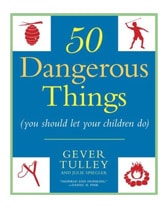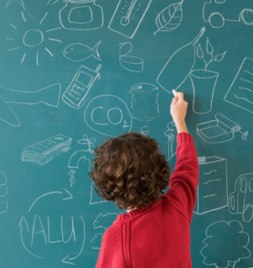This post is from Lasso the Moon a great parenting blog about modern parenting and more. Please visit their site at http://letslassothemoon.com/category/modernparenting/
Book Sale Treasure
Posted
by Zina in Beauty of Everyday Life, Book & Video Reviews, Connect Children with Nature, Cool Products, Finds & Tips, Creatively Curious, Intentional Parenting Tips, Modern Parenting, The Blog
I found a hidden treasure at a local book sale. I threw an aged copy of Exploring Nature with Your Child :: An Introductory to the Enjoyment and Understanding of Nature
by Dorothy Edwards Shuttlesworth into my jammed full $5 grocery bag of
books. This weekend I cracked the spine, read the 1952 copyright date
and wearily dug into my nearly free handbook. I was awed by the intro: “Children are natural explorers.
They have the true explorer’s interest in their immediate surroundings
as well as far away places, and they are eager to know why things are as
they are.
“Children are natural explorers.
They have the true explorer’s interest in their immediate surroundings
as well as far away places, and they are eager to know why things are as
they are.
If you are a wise parent you will look upon these qualities in your child as a sacred fire–always to be fed, allowed to die out never.
An inquiring mind and zest for living are essential for a rich,
interesting, and worth-while life. Childhood is a time to nourish and
strengthen these fine qualities. Just as your child is a natural
explorer, you are a natural guide.You can be a fellow explorer, too, enriching your own life as well as your child’s. As you look back on your own early years, you may recall the first time you noticed a bud opening into a flower, a bird building its nest, two colonies of ants battling each other. You may remember that such intimate glimpses of nature gave you a real thrill. Now, as a parent, you can find still more pleasure in learning about the ways of animals and the wonders of plants as you share your observing with your child. No need to go on a safari through Central Africa–delightful discoveries await you in your own back yard, in city parks and suburban gardens, along forest trails where you may hike, and by the side of lakes and streams or the ocean where you may vacation.”
I cannot wait to dive into the section “How to Understand the Birds”!

……………………………………………………………………………………………………
PS: Other recent, wonderful, library finds include:
 The Sense of Wonder
The Sense of WonderBy Rachel Carson
I loved this section, “A child’s world is fresh and new and beautiful, full of wonder and excitement. It is our misfortune that for most of us that clear-eyed vision, that true instinct for what is beautiful and awe-inspiring, is dimmed and even lost before we reach adulthood. If I had influence with the good fairy who is supposed to preside over the christening of all children I should ask that her gift to each child in the world be a sense of wonder so indestructible that it would last throughout life, as an unfailing anti-dote against the boredom and disenchantments of later years, the sterile preoccupation with things that are artificial, the alienation from the sources of our strengths.
If a child is to keep alive his inborn sense of wonder
without any such gift from the fairies, he needs the companionship of at
least one adult who can share it, rediscovering with him the joy,
excitement and mystery of the world we live in.
Parents often have a sense of inadequacy . . . If you are a parent
who feels he has little nature lore at his disposal there is still much
you can do for your child. With him, wherever you are and whatever your
resources, you can still look up at the sky–its dawn and twilight
beauties, its moving clouds, its stars by night.”The version available at my library is from 1956. I see that the revised version has photos by Nick Kelsh. He is a wonderful photographer and I recommend *all* of his “How to Photograph…” books.
……………………………………………………………………………………………………
 50 Dangerous Things (You Should Let Your Children Do)
50 Dangerous Things (You Should Let Your Children Do) By Gever Tulley
I enjoyed this book, although many of the activities were geared towards slightly older elementary school children (all the way to middle school students). I highly recommend the book. If you are looking for a family oriented holiday gift it would make a nice present for a father.
Barnes & Noble writes, “We all want to save our children from harm, but let’s admit it: Overly protective parents say “Don’t do that!” all too often. This counterintuitive activity book proposes to free beloved offspring from unnecessary, even harmful coddling. In fact, 50 Dangerous Things (You Should Let Your Children Do) explains how activities like sleeping in the wild, melting glass, and, yes, playing with fire can be used to educate youngsters about how to stay safe in the face of danger. Forget tiger mom; we want to build strong, self-reliant tiger children.
Gever Tully was fortunate to grow up in a world full of possibilities and adventures. He and his big brother were free to explore their environment and invent their own projects while growing up in the wide-open rural environs of Northern California and interior British Columbia. Their curiosity was encouraged by their parents, who instilled early on a sensible approach to their experiments. Gever’s famous rule while babysitting: “If you’re going to play with fire, be sure to do it outside.” (Note that this was in the ever-wet yards of coastal Northern California, not the tinder-dry inland desert!)
In 2005, Gever founded Tinkering School to teach kids how to build things. He created the school since he believes we all learn by fooling around. Grand schemes, wild ideas, crazy notions, and intuitive leaps of imagination are, of course, encouraged and fertilized. After years of creating playful hands-on projects for kids of all ages, Gever wanted to share with a wider audience the discovery that comes from this directed “fooling around.” Fifty Dangerous Things (you should let your children do) is his first book on the subject. “


















 Students
are our future – whether they are just entering kindergarten or about
to graduate college, you can’t argue with that fact. So much time,
energy and money are spent on education to ensure that we are raising up
the leaders our world needs for tomorrow… According to the National
Center for Education Statistics Digest of Education Statistics of 2010,
the United States is home to some 140,000 schools (elementary, secondary
& post-secondary) and over 85 million students in public &
private schools. Educating our future leaders on the basics shouldn’t be
our only goal while they are in school – we should be setting an
example for them, including how we treat the environment. And we can
start by greening our schools.
Students
are our future – whether they are just entering kindergarten or about
to graduate college, you can’t argue with that fact. So much time,
energy and money are spent on education to ensure that we are raising up
the leaders our world needs for tomorrow… According to the National
Center for Education Statistics Digest of Education Statistics of 2010,
the United States is home to some 140,000 schools (elementary, secondary
& post-secondary) and over 85 million students in public &
private schools. Educating our future leaders on the basics shouldn’t be
our only goal while they are in school – we should be setting an
example for them, including how we treat the environment. And we can
start by greening our schools.
 Whether
you are a parent, teacher, superintendent or concerned citizen, we
suggest speaking to someone who has authority over your school about
improvements that could be made to address the green initiative while
also providing benefits to the school. The Green Schools Leadership
Center mentioned above is a great resource to look through as well as
checking out LEED credits that your school can earn through simple
adjustments. Though the GSLC was originally created to raise funding to
build new green schools, their resources have since expanded to offer help to existing schools looking to implement green processes wherever they can.
Whether
you are a parent, teacher, superintendent or concerned citizen, we
suggest speaking to someone who has authority over your school about
improvements that could be made to address the green initiative while
also providing benefits to the school. The Green Schools Leadership
Center mentioned above is a great resource to look through as well as
checking out LEED credits that your school can earn through simple
adjustments. Though the GSLC was originally created to raise funding to
build new green schools, their resources have since expanded to offer help to existing schools looking to implement green processes wherever they can. Whether in your restrooms or in your food service areas, the
Whether in your restrooms or in your food service areas, the  Earn LEED credits with the help of the
Earn LEED credits with the help of the  Keep your female teachers, teenage and adult students safe from bloodborne pathogens with the
Keep your female teachers, teenage and adult students safe from bloodborne pathogens with the 








